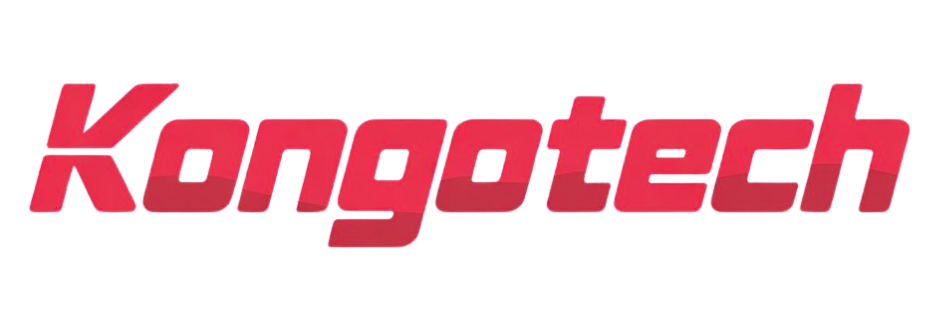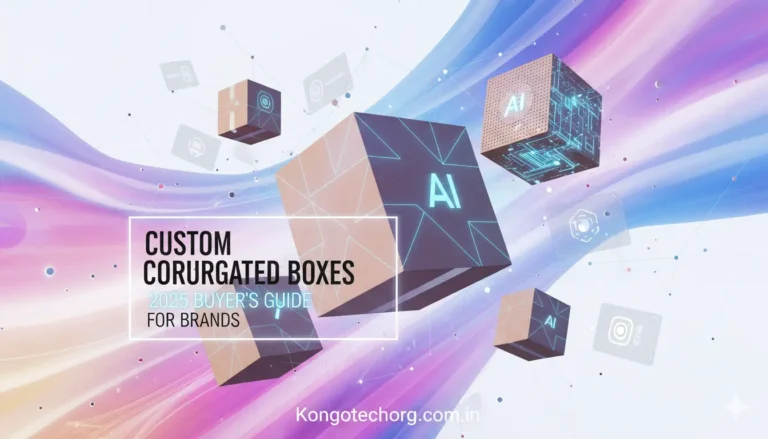Custom corrugated boxes do more than ship product—they protect margins, shape unboxing, and signal sustainability. This guide explains board strength (ECT/BCT and when Mullen still matters), box styles, printing, sustainability claims, and dimensional-weight (DIM) costs. We end with practical steps and mistakes to avoid so you can spec boxes that arrive safe and look on-brand.
Why corrugated still wins for ecommerce
Corrugated packaging balances protection, printability, recyclability, and cost. Crucially, it lets you tune performance: flute type, liner weight, and construction determine how a box handles stacking and puncture hazards. Consequently, the spec you choose (and the way carriers bill it) can swing total landed cost by double-digit percentages.
Strength basics: ECT, BCT, and when to choose Mullen
- ECT (Edge Crush Test) measures edgewise compression of the board and correlates with stacking strength; it is typically the right metric for palletized or warehouse-stacked shipments.
- Mullen (“burst”) measures puncture/burst resistance of the liner; it’s useful when you fear sharp-edge contents or rough handling more than vertical loads.
- BCT (Box Compression Test) measures the compressive resistance of a finished box; it’s the gold-standard lab test (ASTM D642) and underpins many lab calculators and the well-known McKee relationship between board parameters and compression.
Bottom line: For most ecommerce, spec by ECT (e.g., 32 or 44 ECT) and sanity-check critical SKUs with BCT where stacking is severe (high racks, heavy multi-packs). Choose Mullen grades for sharp, dense, or irregular contents.
Box styles and use cases (quick reference)
| Use case | Best-fit style | Typical board | Why this works |
|---|---|---|---|
| Apparel, light DTC goods | Mailer (roll-end tuck-front / RETF) | 32 ECT single wall | Clean unboxing, good print space; plenty for sub-2 kg items. |
| Heavy jars, glass, kits | RSC (regular slotted container) + inserts | 44+ ECT single or 48–51 ECT DW | Better stacking; add dividers for shock and puncture. |
| Subscription bundles | Mailer or RSC with partitions | 32–44 ECT | Balance experience and protection; BCT test for stacked storage. |
| Wholesale master packs | RSC pallet shippers | 44–51 ECT | Pallet stacking favors ECT/BCT performance. |
| Sharp, metal parts | RSC (Mullen grade) | 200#–275# burst | Burst rating resists puncture from edges. |
DW = double wall. Always validate with ship tests where damage is costly.
Printing & brand: from one-color to retail-ready
- Flexographic: cost-effective for 1–3 colors and high volumes; excellent for shipper marks.
- Digital (inkjet): ideal for short runs, seasonal art, or mass customization; no plates, faster changeovers.
- Litho-laminate: premium retail faces for displays or subscription hero boxes.
Because transit scuffs are common, a matte AQ or satin varnish on mailer interiors can keep unboxing photogenic without adding plastic film.
Sustainability without greenwash
If you claim “eco-friendly,” substantiate it. Prefer FSC®-certified material with Chain of Custody so your claim traces through the supply chain. Additionally, align packaging design with ISO 18601 and its related standards for packaging and the environment; they provide a framework for source reduction, reuse, recycling, and energy recovery assessments.
Meanwhile, know your recycling context. U.S. OCC (old corrugated container) recycling rates have been re-benchmarked by AF&PA; under the updated method, OCC recovery is reported in the low-to-mid-70% range, not ~90% as once claimed so avoid outdated statistics in pitch decks.
Shipping math: dimensional weight can erase savings
Carriers price by the greater of actual vs. dimensional (DIM) weight; DIM is L×W×H divided by a divisor, and importantly major carriers now round each dimension up to the next whole inch before computing. Therefore, trimming even 0.2–0.3 in per side can drop you into a cheaper bracket.
Tip: Ask your converter for a trial in two footprints, then ship test both. Often, a tighter mailer with thinner flute (e.g., E-flute) saves more on DIM than it costs in board.
Practical steps / checklist
1) Define constraints first
- Product hazards: sharp edges → consider Mullen grades; heavy stacking → spec by ECT/BCT.
- Supply chain: pallet stacking vs. courier cross-belt handling changes priorities.
- Carriers & lanes: confirm DIM rules and divisors for your services.
2) Choose board & flute intentionally
- Start with 32 ECT C-flute for light goods; move to 44 ECT (or double wall) as mass and stacking rise.
- For premium print and tighter tolerances, consider E- or B-flute mailers.
3) Validate with tests, not guesses
- Run ASTM D642 compression tests on critical SKUs; use a BCT calculator only for estimation.
- If breakage is costly, perform distribution simulation and drop tests; record failures and iterate.
4) Specify print like a pro
- Provide dielines, Pantone/CMYK targets, overprint/knockout notes, and coverage limits (to avoid warping).
- For short-run campaigns, pilot digital printing to eliminate plates and MOQ friction.
5) Make defensible sustainability claims
- Request FSC Chain-of-Custody documentation from suppliers; keep records with PO numbers.
- Reference ISO 18601 family in internal specs; avoid generic “eco” badges.
6) Manage DIM proactively
Prototype two or three sizes; ship to real addresses and compare billed weights under current FedEx/UPS rounding policies.
Ask for a Cost-to-Serve exercise: pack-out density, void fill, and outer dimensions modeled against your lane mix.
Common mistakes & how to avoid them
- Choosing Mullen when stacking is the issue
Why it hurts: great burst resistance, poor predictor of pallet stack performance.
Fix: spec ECT and validate with BCT; save Mullen for puncture-risk SKUs. - Using calculators as gospel
Why it hurts: McKee-based tools are approximations.
Fix: run ASTM D642 on finished boxes and keep change logs. - Over-sizing for “safety”
Why it hurts: DIM charges spike; customers get air.
Fix: right-size mailers; reduce void fill; validate under carrier DIM rounding rules. - Green claims without proof
Why it hurts: reputational risk.
Fix: use FSC Chain-of-Custody and cite ISO 18601 framework; don’t quote outdated 90%+ OCC recycling stats. - Ignoring print process limits
Why it hurts: color drift, warping, cracking on folds.
Fix: set coverage caps; design for flute; run press proofs before national launches.
You might also like: 10+ Free Online Typing Jobs Without Any Investment
FAQ
1) What ECT should I choose for ecommerce shipping?
Start at 32 ECT for light goods (apparel, cosmetics). Move to 44 ECT when stacked storage or weight increases. Validate with BCT for heavy kits or wholesale shippers.
2) How is BCT different from stacking strength?
BCT is a laboratory compression value on a specific test setup; true stacking strength across a distribution cycle can be lower due to humidity, creep, and impacts—so treat BCT as a benchmark, not a guarantee.
3) Do I need Mullen-rated boxes?
Choose Mullen when puncture is the dominant risk (hardware, metal parts, dense objects). Otherwise, ECT better reflects stacking performance for pallets and racking.
4) Will smaller mailers actually cut shipping costs?
Usually yes, because carriers bill by DIM or actual weight—whichever is greater—and now round up each dimension to the next inch before calculating. Trimming fractions can change the billed weight tier.
5) What’s a credible sustainability claim for corrugated?
Use FSC-certified stock with Chain-of-Custody, and align specs to ISO 18601 family principles. Avoid quoting obsolete OCC recycling stats; rely on current AF&PA/EPA data instead.
6) Are digital-print boxes durable enough?
Yes for most DTC use. Durability depends more on board and coating than print process; still, request rub/scuff tests on your chosen finish.
Conclusion
Selecting custom corrugated boxes is an exercise in trade-offs: strength vs. weight, print vs. cost, and size vs. DIM. Start with a clear hazard profile, pick ECT (or Mullen) intentionally, and verify with BCT where failure is expensive. Then, right-size for shipping, choose the appropriate print method, and back sustainability claims with FSC and ISO 18601. With that workflow, you’ll protect goods, elevate unboxing, and control per-order costs—even as carrier rules and consumer expectations keep shifting.




